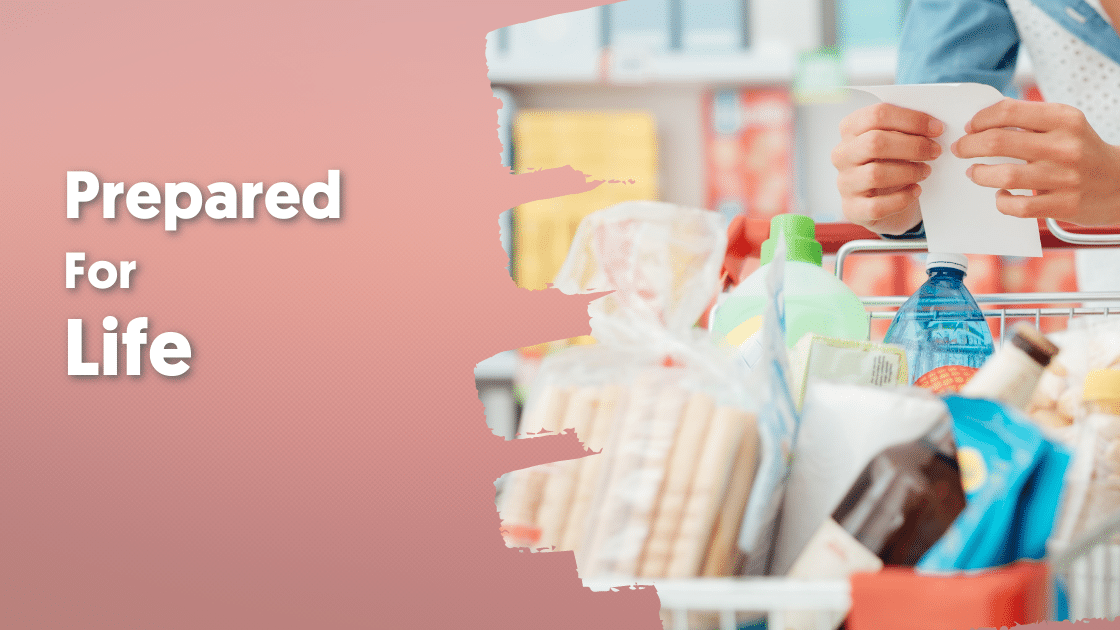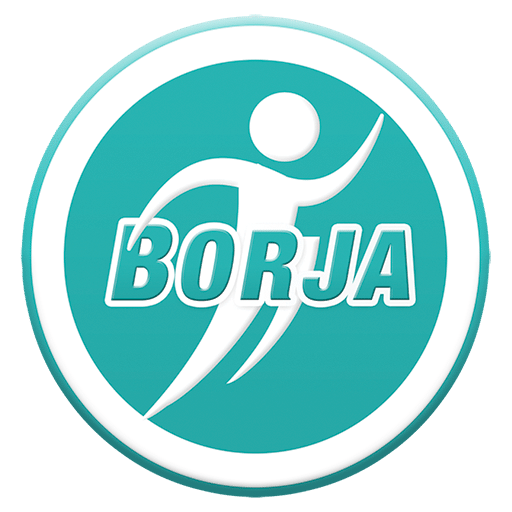This year has undoubtedly thrown everyone for a loop in one way, shape or form. Although we can’t always control what happens to us, we can control how we handle the situation. Having some basic fundamental resources in place can help us be as best prepared as possible and, more importantly, be ready to tackle anything that may come our way. In this article, we are going to explore simple steps that we can take so we’re prepared for life- and ready for any emergency situation.

Food
The first topic we are going to focus on when it comes to emergency preparedness is food. Whether you’re preparing for a power outage, global pandemic, or being snowed in, having food on hand will help give you peace of mind during an increasingly stressful time.
So, where do you even start? The mere idea of beginning to prepare for an emergency or unpredicted situation may seem overwhelming, but it doesn’t have to be.
Step #1
First, let’s divide the topic of food into four categories: pantry, refrigerator, freezer, and back stock. These areas all have different parameters and different requirements for the food that they hold. Creating these zones allows you to break everything down into smaller categories, making it easier to manage and plan for.
Step #2
Next, create a list of household staples that should always be kept on hand. Use the lists below to help gather inspiration for products that work best for you and your family. Also, think about meals that you commonly cook in your home and work backward to decide on ingredients that can be added to the list.
Step #3
Once you have your list of food staples, strategize how and where they should be stored. Keep expiration dates and the shelf-life in mind when choosing the best storage option to maximize freshness and quality. After all, the expiration date means nothing if food is improperly stored and goes stale.
Step #4
Finally, develop a system that allows you to maintain, utilize and restock food as needed. Whether you create an inventory list or simply check stock at the beginning of every month, it’s important to choose a game plan that is easy and effortless for you to follow.
These steps really take the stress and guesswork out of planning for emergency situations. You will quickly learn that being prepared doesn’t always mean that it has to be an overly-complex or complicated process. Now, let’s take a closer look at the four categories mentioned in step 1.
Pantry
With a longer shelf-life and no dependency on the refrigerator or freezer, pantry food is inherently easier to plan in terms of longevity. Don’t have a huge pantry? No problem! You can easily store the basics with even the most limited space.
Here are the basics of pantry foods:
- Pasta noodles
- Soup
- Peanut Butter + Nut Butter
- Crackers
- Condensed Milk
- Beans
- Salt/Pepper/Spices
- Rice
- Cereal
- Oats
- Mac & Cheese
- Pancake Mix
- Bread
When it comes to pantry foods, canned goods, and boxed grains are among the top prospects. It’s important to choose a variety of dry foods, and more importantly, ones that have little to no work needed to prepare them for consumption.
For instance, during a power outage, utilizing a stovetop to prepare pasta may not be an available option, so resorting to something like peanut butter and jelly sandwich may be more likely. Having a variety of these staples in your pantry will come in handy regardless of what the emergency may be.
Refrigerator
Although refrigerator foods don’t have nearly the shelf-life as pantry foods, there are still plenty of staples that you can keep on hand for any situation. Try aiming for foods that are key ingredients in various recipes or that can be used in several different ways. To help prevent food from expiring, rotate new food to the back of the fridge as you get it and bring the original food towards the front.
Here are the basics of refrigerator foods:
- Deli meat
- Cheese
- Eggs
- Milk
- Vegetables
- Potatoes
- Ketchup/Condiments
- Fruit
- Yogurt
- Butter
When it comes to refrigerator foods, versatility really is key. As previously mentioned, it’s important to try choosing food that can be used in different meals or snacks. Foods like eggs and cheese are great because they can be eaten alone or used with other ingredients to create a larger meal. Choosing staples that you can incorporate into other dishes will also make it easy to ensure food isn’t wasted because of its expiration.
Freezer
With the ability to freeze fruit, poultry, and everything in between for several months on end, freezer foods can really help you capitalize when it comes to food preparation. Some foods, such as chicken breast, even have different freshness dates depending on whether they are cooked or uncooked when stored in the freezer.
Here are the basics of freezer foods:
- Chicken
- Beef
- Turkey
- Fish
- Shrimp
- Fruit
- Vegetables
- Juice Concentrate
- Waffles
- Bread
When it comes to freezer foods, the sky’s the limit. Typically, vegetables and proteins are most commonly utilized since they can stay fresh for months longer than if they were kept in the refrigerator. As previously mentioned, some foods you can choose to cook or leave uncooked when freezing them. You can even marinade things like chicken and vegetables to lock in the flavor while preserving their freshness.
Back Stock
There’s a fine line between being excessive and being prepared. When it comes to back stock, you’re really playing the long-term game. Although most of the important back stock items are dry goods, the key difference is that these foods should be in higher quantity and not used nearly as often (either in the case of an emergency or a month before their expiration.) Storing backstock in areas that have unused space, such as the garage or basement, is a great way to maximize your storing capacity.
Here are the basics of back stock foods:
- Soup
- Tuna
- Broth
- Flour
- Activated Yeast
- Sugar
- Canned Sauces
- Peanut Butter
- Ramen Noodles
- Powdered Milk
- Dried Fruit
When it comes to back stock, the main focus is going to be food that is consumed frequently by you and your family. Think of your back stock area as things you would purchase on a Costco trip- things you would buy in bulk if you had the chance to. Ingredients like activated yeast and flour are great because you can make bread, rolls, and pretzels if you run out of stock or simply just want something different.
Storage
Now that you have a list of food items you should keep on hand, it’s time to focus on where to store that food.
Whether it’s storing dry goods in the pantry or poultry in the freezer, the key is making sure you’re preventing air from escaping in and out of the container or bag. Especially with freezer containers, when moisture is exposed to outside air, ice crystals can begin to form- commonly called freezer burn- and will begin to affect the quality of the food.
Airtight Containers
Investing in leak-proof containers (like Rubbermaid Brilliance Containers) will not only prevent liquids from spilling but will also prevent food from spoiling. Most leak-proof containers come in a variety of sizes, allowing you to store leftovers, snacks, and everything in between with ease. You can utilize chalk pens to write labels and dates on the outside of the containers so you can easily identify your meals and how long they will be fresh.
Specifically designed for dry goods, air-tight containers (like Oxo Good Grips Pop Containers) are a game-changer. Ranging in a variety of shapes and sizes, look for containers that are easily stackable to help maximize space efficiency. Most of these containers are now completely dishwasher safe now too, making cleaning them a breeze. If you decide to store things that often come with baking/cooking instructions, like pancake mix, simply cut the instructions from the packaging and tape them to the bottom or back of the container. And of course, utilize labels or chalk-pens to help identify everything.
Produce
Another great investment when it comes to food is produce-saving containers. For example, Rubbermaid FreshWorks Containers. These containers will have special vents or filters in the lid that regulate oxygen and carbon dioxide flow, which prevents the produce from browning and going bad.
Not only will your produce stay fresher for longer, but you will be wasting less food in the process AND saving money by making fewer trips to the grocery store. You’ll have peace of mind knowing the food in your fridge hasn’t gone bad, which means less stress in your life.
Another great, and fairly new product, that is worth every penny is reusable, plastic-free bags (like Stasher Bags). Don’t be fooled, there are many different kinds by many different brands, but depending on your needs, there are several that can help keep your food preserved. These bags are perfect for utilizing space that bulky, rectangular containers lack. They also make thawing food a breeze.
Household Essentials
We are going to dive into the 3 main categories of household essentials: medical, cleaning, and disaster supplies.
Medical Supplies
The term medical supplies can be a wide range of things. For instance, it can include anything from medications to first-aid supplies. It’s important to keep a wide variety of items available, especially when dealing with time-sensitive medical emergencies. Make sure to keep expiration dates and shelf lives in mind when buying and storing these necessities. Although every family has different needs, the list below is a great starting point for medical supplies to keep in your home.
- Ibuprofen
- Bandaids
- Ice Compress
- Cough Drops
- Acetaminophen (Tylenol)
- Bug Bite Lotion
- Thermometer
- Peroxide
- Cotton Balls/Squares
- Rubbing Alcohol
- Prescription Medications
Cleaning Supplies
Whether you’re cleaning your clothes, countertops, or hands, it’s important to keep a range of cleaning/toiletry supplies on hand. Even more so during times when traveling to the store is difficult or store inventory is low. Additionally, be sure to rotate the newer product to the back when replenishing your stock to help avoid products from expiring. Cleaning supplies you should always have in your home include:
- Disinfecting Wipes
- Laundry Pods/Detergent
- Dryer Sheets
- Toilet Paper
- Paper Towels
- Hand Soap
- Hand Sanitizer
- Shampoo/Conditioner
- Toothpaste
Disaster Supplies
Typically, disaster supplies are the things that either don’t work or you don’t have, right when you need them the most. While you can’t (and shouldn’t) prepare for every type of disaster conceivable, you can still create a system that allows you to have the necessities within arms reach. Or, at least, with a little help from a trusty step stool.
Here are some important items to keep you and your family safe and comfortable during power outages, pandemics, and everything in between.
- Batteries (All Sizes)
- Charging Cords
- Portable Chargers
- Lantern/Flashlights
- Emergency Radio
- Sleeping Bags
- Water/Food
- Manual Can Opener (For Food)
- Fire Extinguisher
Having these basic fundamental resources in place can help you be as prepared as possible, and more importantly, be ready to tackle any situation that may come your way. To learn how to keep your house prepared and organized, click here.



